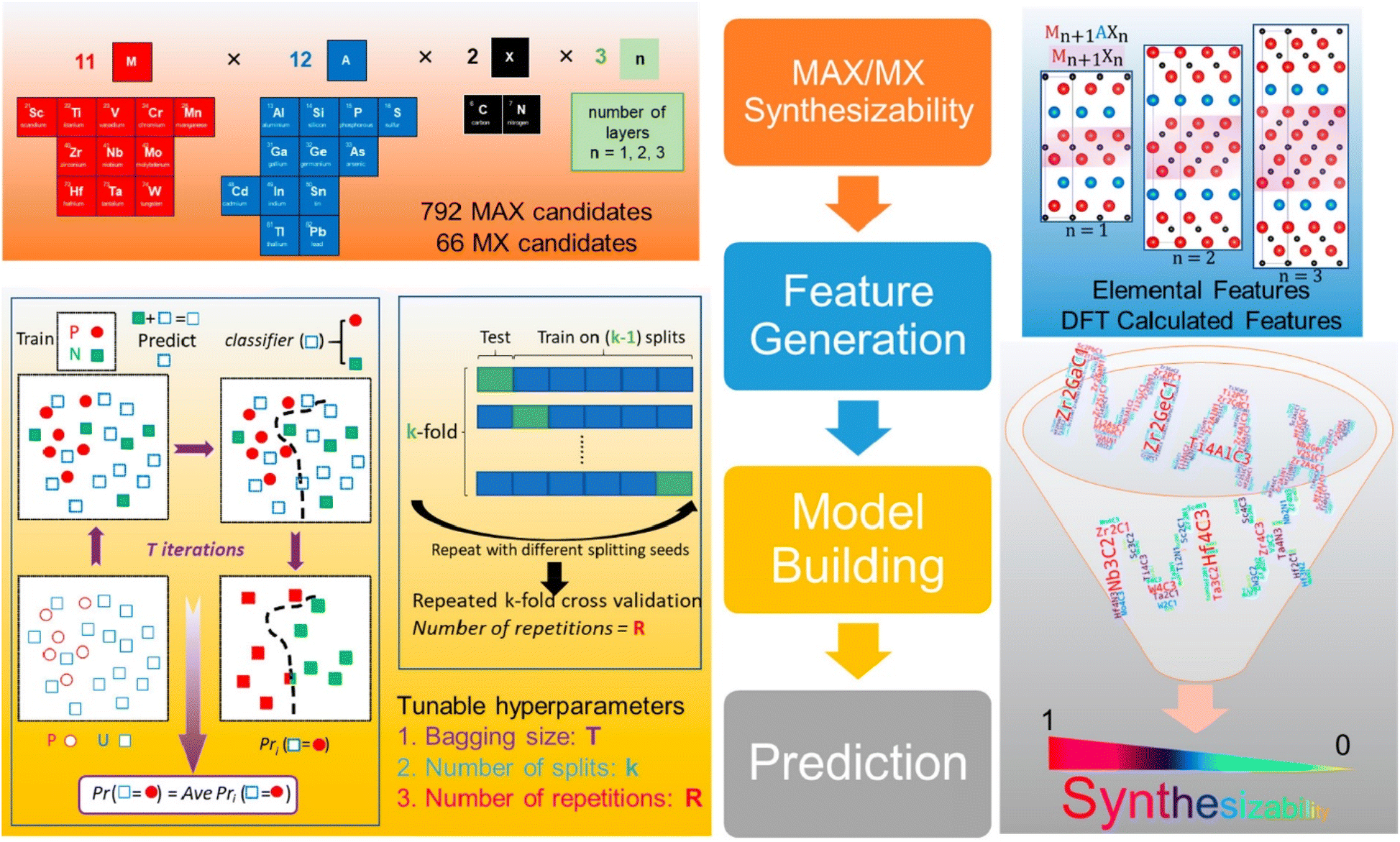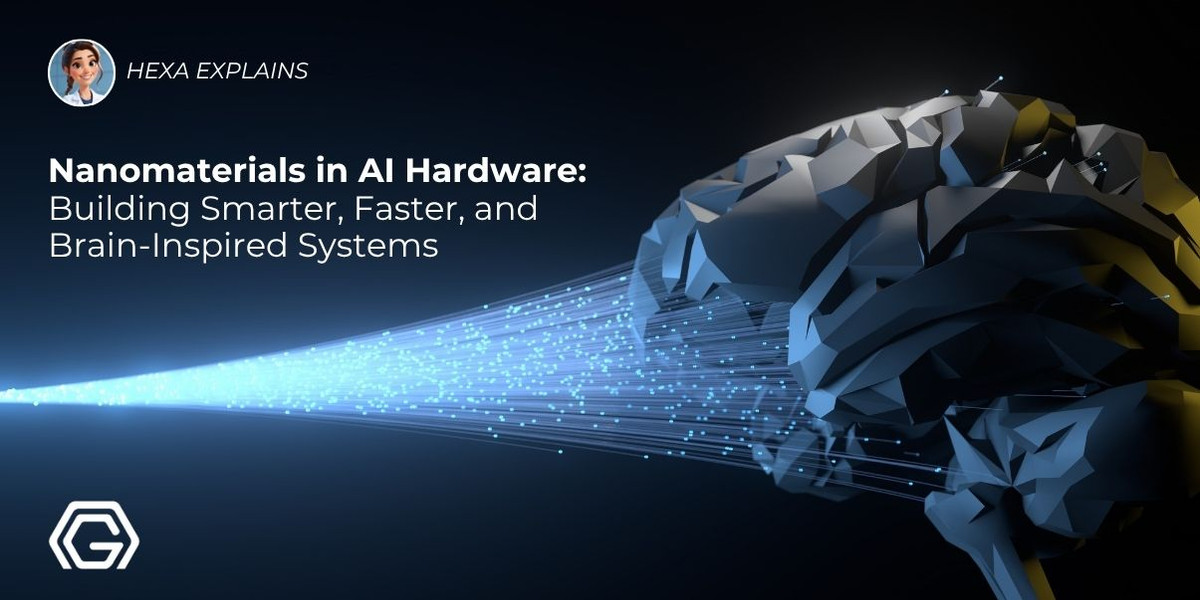Nanomaterials in AI Hardware: Building Smarter, Faster, and Brain-Inspired Systems
AI’s future depends not just on algorithms, but on the materials that bring intelligence to life.
Graphene, MXenes, and other nanomaterials are enabling brain-like chips, responsive sensors, and high-speed wireless communication, transforming the physical foundation of artificial intelligence.
Nanografi supports this transformation by providing advanced materials tailored for AI hardware research and development, enabling global researchers and engineers to prototype next-generation systems.
Introduction
Artificial intelligence is evolving rapidly but the hardware running it is hitting fundamental limits. Traditional silicon chips struggle with energy efficiency, latency, and adaptability. To overcome these challenges, researchers are turning to materials engineered at the atomic level. Graphene, MXenes, and carbon nanotubes are among the most promising nanomaterials, offering dynamic electrical properties, high mechanical resilience, and scalable functionality.
These materials are no longer theoretical. Groundbreaking experiments from leading institutions, like Tsinghua University, RWTH Aachen, and IBM Research Europe are demonstrating their real-world potential in neuromorphic computing, memory architectures, and chip-to-chip communication.
Graphene: A Neuromorphic Powerhouse
Graphene’s unique structure, a single layer of carbon atoms arranged in a hexagonal lattice, gives it extraordinary electrical conductivity, flexibility, and tunability. These features make it an ideal candidate for neuromorphic computing systems, which aim to replicate the brain’s ability to learn and adapt.
One breakthrough study by researchers at Tsinghua University demonstrated that graphene-based synaptic transistors can mimic key biological behaviors, such as potentiation, depression, and spike-timing-dependent plasticity (Huang, Li, & Zhu, 2022). These devices are capable of emulating how real neurons adjust the strength of their connections in response to stimuli, a foundational mechanism for learning and memory.
Beyond mimicking biology, graphene also supports AI at the materials level. It enables intelligent property prediction, inverse design, and optimization using machine learning tools. In this way, graphene serves not just as a material for AI hardware, but as an active participant in its development.
MXenes: Memory, Modeled by AI
While graphene excels at processing and adaptability, MXenes a family of 2D transition metal carbides and nitride stand out for their performance in memory and storage. Their layered structures and high surface activity make them well-suited for devices like memristors, which change resistance in response to electrical input to store information.

|
Figure 1 Design space of MAX/MXene compounds, PU learning workflow, and synthesizability predictions illustrated via word clouds. (Wang et al., 2019, as cited in Iravani et al., 2024) |
What makes MXenes even more valuable is their synergy with artificial intelligence. Researchers from have used machine learning models such as random forest and support vector regression to predict MXenes’ mechanical and electronic properties, including tensile strength and specific capacitance (Iravani et al., 2024). This allows scientists to design and optimize new MXene-based devices without years of experimental trial and error.
These AI-enhanced approaches are making MXenes central to the development of high-density, energy-efficient memory systems that can support the increasingly demanding data needs of intelligent machines.
CNTs and MoS₂: The Sensing–Processing Bridge
For AI systems to interact with the real world, they must be able to sense, process, and respond to physical signals. This requires materials that can convert mechanical or environmental input into usable data ideally within the same architecture. Carbon nanotubes (CNTs) and two-dimensional transition metal dichalcogenides (TMDs), like molybdenum disulfide (MoS₂), make this possible.
CNTs offer exceptional electron mobility and mechanical strength, ideal for flexible sensors and wearable electronics. When combined with MoS₂, they enable heterostructures that function as synaptic devices, modulating electrical resistance in response to input just like a neuron.
Graphene Antennas: Rethinking Chip Communication
AI today is not confined to a single chip. It’s distributed across cloud platforms, edge devices, and modular chiplet architectures. As processing is disaggregated, communication becomes a major bottleneck. Traditional copper interconnects are increasingly limited by heat, density, and delay. Enter graphene again with a different role.
In a project led by IBM Research Europe, EPFL, and RWTH Aachen, scientists developed compact graphene antennas capable of operating in the terahertz (THz) frequency range. These antennas can be tuned dynamically for both frequency and beam direction, making them ideal for wireless communication between chiplets. The technology reduces latency, increases bandwidth, and enables real-time reconfiguration of computing tasks across multi-chip systems (Abadal et al., 2023).
This kind of intra-package communication could revolutionize how AI hardware is scaled—making future architectures faster, more modular, and far more adaptable than anything built on conventional wiring.
Conclusion
From neuromorphic learning to wireless chip communication, nanomaterials are reshaping the way AI systems function both in form and performance. Graphene brings flexibility and synaptic intelligence, MXenes offer AI-optimized memory, CNTs and MoS₂ bridge sensing and computation, and graphene antennas redefine how chips talk to one another.
Are you working on next-gen AI systems? Explore how Nanografi's advanced nanomaterials can accelerate your R&D journey.
References
- Abadal, S., Guirado, R., Taghvaee, H., Jain, A., Pereira de Santana, E., Haring Bolívar, P., ... & Sebastian, A. (2023). Graphene-Based Wireless Agile Interconnects for Massive Heterogeneous Multi-Chip Processors. IEEE Wireless Communications, August 2023.
- Feng, C., Wu, W., Liu, H., Wang, J., Wan, H., Ma, G., & Wang, H. (2023). Emerging Opportunities for 2D Materials in Neuromorphic Computing. Nanomaterials, 13(19), 2720. https://doi.org/10.3390/nano13192720
- Huang, M., Li, Z., & Zhu, H. (2022). Recent Advances of Graphene and Related Materials in Artificial Intelligence. Advanced Intelligent Systems, 4(10), 2200077. https://doi.org/10.1002/aisy.202200077
- Iravani, S., Khosravi, A., Zare, E. N., Varma, R. S., Zarrabi, A., & Makvandi, P. (2024). MXenes and Artificial Intelligence: Fostering Advancements in Synthesis Techniques and Breakthroughs in Applications. RSC Advances, 14, 36835–36851. https://doi.org/10.1039/d4ra06384h
- Wang, C., Naguib, M., Page, K., Taylor, A. D., Gogotsi, Y., & Kent, P. R. C. (2019). Universal synthesis prediction approach enabling accelerated discovery of materials. ACS Nano, 13(8), 8997–9003. https://doi.org/10.1021/acsnano.9b03511
Recent Posts
-
Art That Changes Over Time: Stimuli-Responsive Materials Enabled by Nanotechnology
Art, design, and advanced materials are converging at an unprecedented pace, with nanotechnology in …19th Dec 2025 -
The Science Behind Super Suits: Advanced Nanomaterials, CNT Fibers and Graphene Composites
From Fiction to Advanced Nanomaterials in Real Protective Systems For years, popular culture has por …4th Dec 2025 -
Beyond Reduced Graphene Oxide: Discover Nanografi’s Advanced rGO-TEPA
As research in advanced materials expands, graphene derivatives with engineered surface chemistry a …17th Nov 2025





